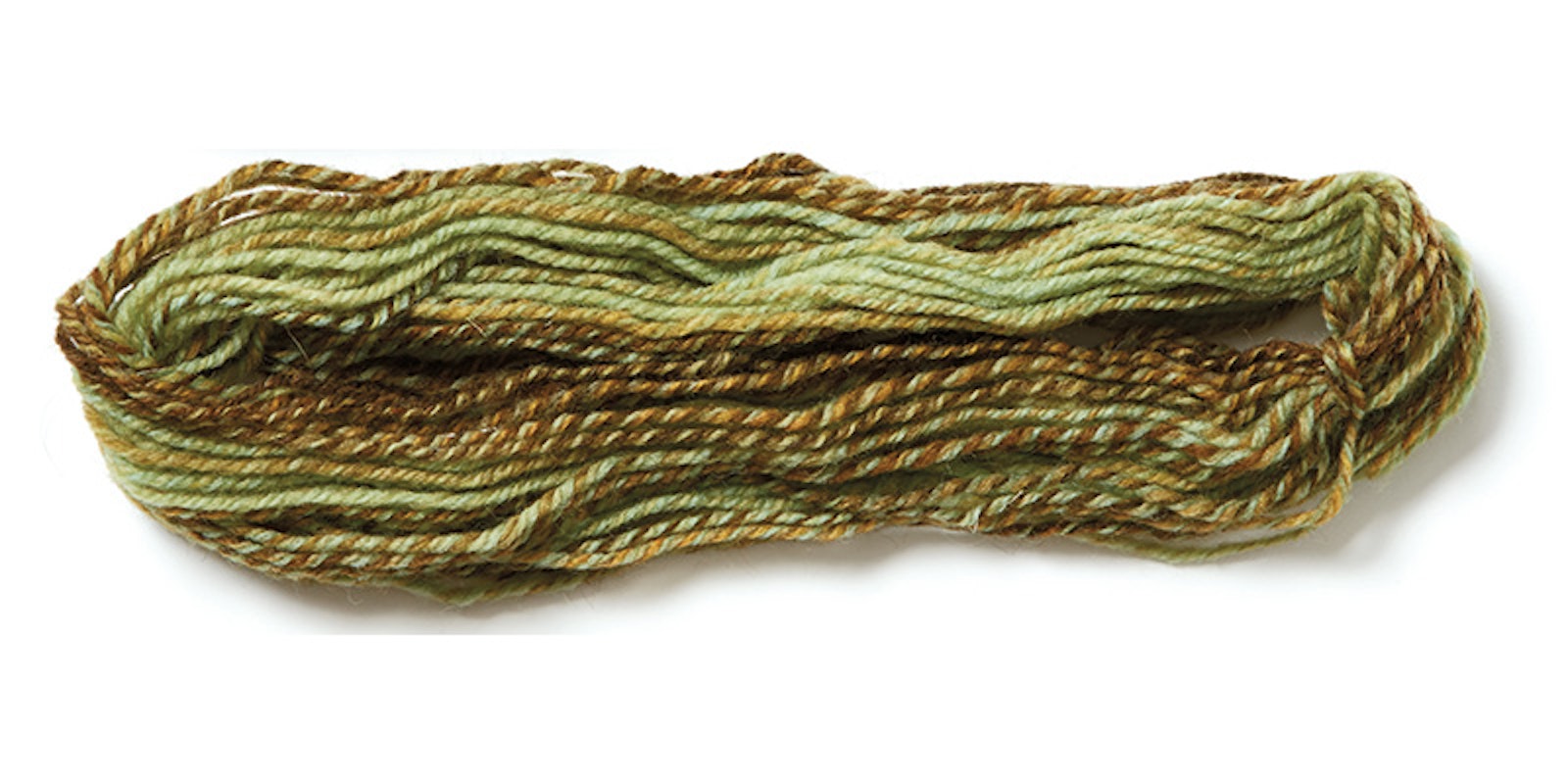It is not unusual for spinners to want to spin yarn to match the yarn used in a commercial pattern. The chart below has information that will help you do that. To spin yarn with a pleasing appearance and a nice texture, choose a type of wool that will complement the style of yarn you want to spin. Fine wool is good for spinning superfine and fine-weight yarns. Medium wool can be used for fine to bulky yarns. Long wool is good for spinning durable medium and bulky yarns.
The Craft Yarn Council has worked with fiber, needle, and hook manufacturers and pattern publishers to set up a series of guidelines and symbols to bring uniformity to patterns and to yarn, needle, and hook labeling. Spin Off published a chart in the Winter 2013 issue that expands the Craft Yarn Council’s information to make it more useful to spinners. In my chart I have given the wraps per inch (wpi) and the twists per inch (tpi) needed when spinning yarn to match the different categories. Remember, the information below is just a reference guide. Do not feel compelled to match the numbers exactly.

Using the tpi/2-ply column, try to select fiber that has about the same number of crimps per inch as the twists per inch indicated for your finished two-ply yarn. If you are using commercially prepared top, pull a pinch of fibers from the end of the top, moisten the fibers to restore the crimp, pat them dry, and examine the crimp to see if it is appropriate for the project. When using a spinning wheel to spin the singles, use the tpi/singles column to help you choose an appropriate whorl/pulley. As you spin the singles, check the wraps per inch of your singles yarn. Also, fold a loop of the singles, let it ply on itself, and check the wraps per inch of the sample plied yarn. If necessary, adjust the amount of fiber you are drafting to get closer to the wraps per inch listed in the chart. When I spin, I do not try to count the twists per inch in the singles or the plied yarn. I just make sure the ply twist is appropriate for the intended project.
Important facts to remember: When singles are plied together as a balanced yarn, the wraps per inch of the two-ply yarn will be about two-thirds of the wraps per inch of the singles. And when plied, the singles lose two-thirds of their original twist and the ply twist will be two-thirds of the twist in the singles.
Rudy Amann attended most of the Spin Off Autumn Retreats held between 1994 and 2008, and was a mentor at seven of them.
This article was published in the Spring 2013 issue of Spin Off.

